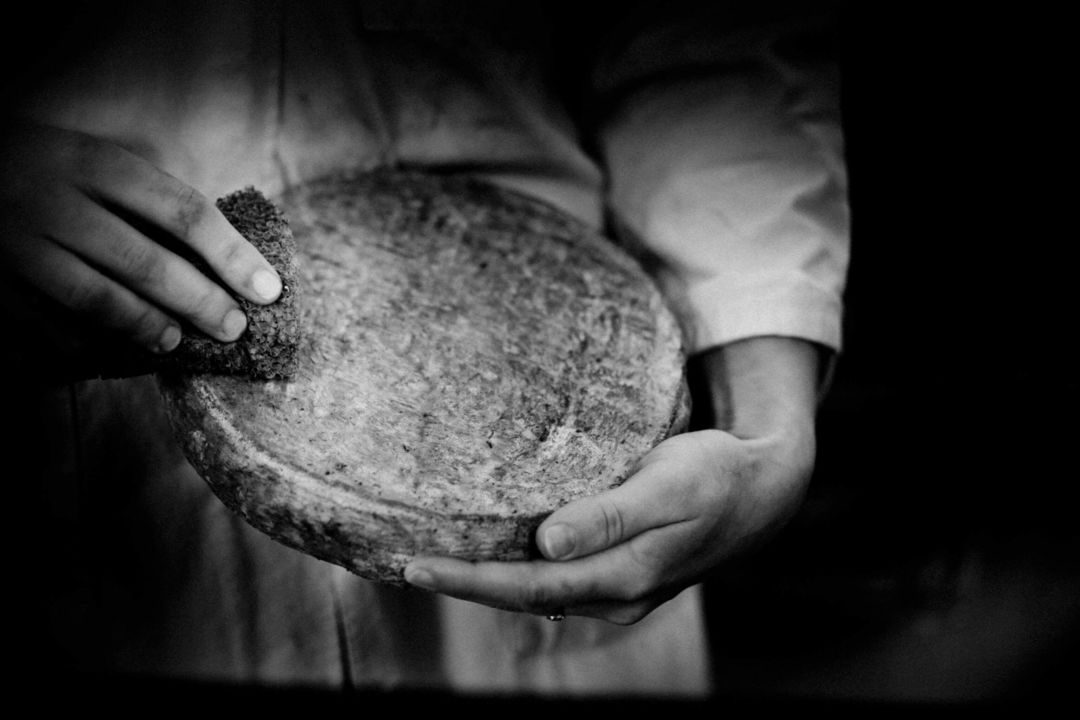
Crédits photo bandeau Saint-Nectaire cheese with a nutty flavour - Copyright AOP Saint-Nectaire
Auvergne is one of the main PDO cheese-producing regions, representing nearly a quarter of all French production and no less than 5 cheeses of Protected Designation of Origin.
And here you are in the land of one of those PDO cheeses, Saint-Nectaire!
Made since the days of the Arverni, the unique PDO Saint-Nectaire cheese originally won its spurs in the 17th century when it was introduced to the court of the Sun King (no less!) by Henri de Senneterre, a Marshal of France. Louis XIV also became fond of this cheese and, ever since, Saint-Nectaire has been one of the stars of the Massif du Sancy.
It is savoured at every table, both in restaurants and in households.

The cheese rind is formed during the maturing process - Copyright AOP Saint-Nectaire

Refining of Saint-Nectaire cheese

The cheese rind is formed during the maturing process - Copyright AOP Saint-Nectaire
The Massif du Sancy, in the very heart of the Saint-Nectaire PDO production area
The ancient authenticity of traditional Saint-Nectaire farmhouse cheese is guaranteed by the very specific requirements of its Protected Designation of Origin (PDO).
The Saint-Nectaire PDO area extends across the French departments of Cantal and Puy-de-Dome, with the Massif du Sancy sitting right in the middle! Indeed, the villages of Besse et Saint-Anastaise, Chambon-sur-Lac, Chastreix, Compains, Egliseneuve-d'Entraigues, Espinchal, La Bourboule, La Godivelle, Le Vernet Sainte-Marguerite, Le Mont-Dore, Montgreleix, Murat-le-Quaire, Murol, Picherande, Saint-Diéry, Saint-Genès-Champespe, Saint-Nectaire, Saint-Pierre-Colamine, Saint-Victor-La-Rivière and Valbeleix are all within the geographical area where traditional "Saint-Nectaire" cheese is produced on farms and in dairies.
You can taste this outstanding PDO cheese at the farm or during a meal in one of the region’s traditional restaurants. Our tourist office suggests various restaurants serving local dishes, where you can taste this product during a family meal and match it with a good local wine!
Did you know...?
The people of Sancy love their food and are generous too! Besides the inevitable PDO Saint-Nectaire cheese, you can also try the other cheeses of Auvergne: Cantal, Salers, Fourme d’Ambert and Bleu d’Auvergne. No less than four other PDO cheeses.

The Massif du Sancy in the heart of the Saint-Nectaire PDO zone
Some of the farmers open their doors twice daily, every morning and evening, to share with you their love of the job and show you first-hand how they milk the cows and produce Saint-Nectaire and other local cheeses. This is an experience nobody should miss!

Milking cows to recover raw, whole milk - Copyright AOP Saint-Nectaire
Where to buy Saint-Nectaire cheese?

Buy Saint-Nectaire cheese at the farm
Saint-Nectaire PDO farmhouse cheese is made from raw, whole cow’s milk, straight after the morning and evening milking sessions and always with milk from a single farm. It is a cheese of character with a grey rind and a strong taste.
Dairy Saint-Nectaire is made at the dairy with milk from different farms located within the designation area. Made from pasteurised milk, this cheese has a milder flavour and is popular among children. Its rind is orangey-yellow.
Apart from their colour, the cheeses can be identified by the casein PDO sticker placed on each one, an oval sticker for farmhouse cheese and a square one for dairy cheese.
Added bonus
Yummy ! It has a small taste of hazelnuts, an unique flavour directly coming from surrounding pastures.

Making Saint-Nectaire cheese

Making Saint-Nectaire cheese

Making Saint-Nectaire cheese
21 cm
in diameter
1.5 kg
approximately
15 l
of milk
28 days
of maturation
It ripens for a minimum of 4 weeks to give the cheese its specific taste. This stage requires the special care and attention of an expert.
The cheeses are ripened at the farm or in a cheese-ripener’s cellar.
Over the first fortnight they are washed several times in salty water, then rinsed in clear water. Next they are turned at regular intervals to allow the characteristic rind to form. The rind is edible and has a multiple, more exquisite taste.
Did you know...?
In the Massif du Sancy, unlike other cheese-producing regions, you cannot visit the ripening cellars. For reasons of hygiene, their access is restricted to the profession.

The maturing of Saint-Nectaire cheese in the cellar - Copyright AOP Saint-Nectaire
You will also like...
